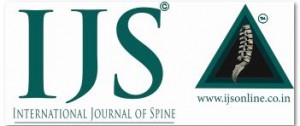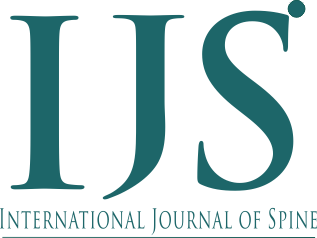Result of Study Of Transforaminal Lumbar Interbody Fusion Surgery
Volume 4 | Issue 2 | July – Dec 2019 | Bhavesh R. Namsha, Udaygiri H. Meghnathi, Bhavik K. Ahir | Page 2-6
Authors : Bhavesh R. Namsha, Udaygiri H. Meghnathi, Bhavik K. Ahir [1]
[1] Department of Orthopaedics, SSG Hospital & Medical college Baroda, Gujarat, India
Address of Correspondence
Dr. Udaygiri H. Meghnathi,
Department of Orthopaedics, SSG Hospital & Medical college Baroda, Gujarat, India
Email: udaymeghnathi@gmail.com
Abstract
Background: Low back pain is one of the most common reported problem affecting spine. The most common causes of Low back pain are herniated discs, lumbar canal stenosis, degenerative disc disease, spondylolisthesis. Over the past few decades, new treatments and technologies are being implemented to treat spinal disorders to improve patient outcome. The Main objective of study is to access clinical and Radiological result that is obtained with Transforaminal lumbar interbody fusion as a treatment of severe back pain and degenerative disc diseases & to describe outcomes following Transforaminal lumbar interbody fusion (TLIF) surgery.
Methods: A Total of 15 patients who had back pain with degenerative disc disease were operated by TLIF through period from July 2017 to July 2018. Results were measured using the Visual Analogue Scale(VAS) and Oswestry Disability Index (ODI).
Results: Marked improvement in back pain according to VAS. Pre operative Average VAS Score was 7 and post operative average VAS score at 6 month follow up was 1.73. According to ODI score pre operative average ODI score was 66.53 and post operative 6 month ODI score was 18.53
Conclusion: From this study we have concluded that Transforaminal lumbar interbody fusion (TLIF) is a safe and effective method of achieving spinal fusion in patients with degenerative disc disease & low grade spondylolisthesis and thereby reduces back pain and improves patient’s disability score
Keywords: transforaminal lumbar interbody fusion- TLIF, Visual Analogue Scale- VAS, Oswestry Disability Index- ODI, PEEK
| How to Cite this Article: Namsha B R, Meghnathi U H, Ahir B K. Result of Study Of Transforaminal Lumbar Interbody Fusion (TLIF) Surgery. International Journal of Spine July-Dec 2019; 4(2): 2-6. |





